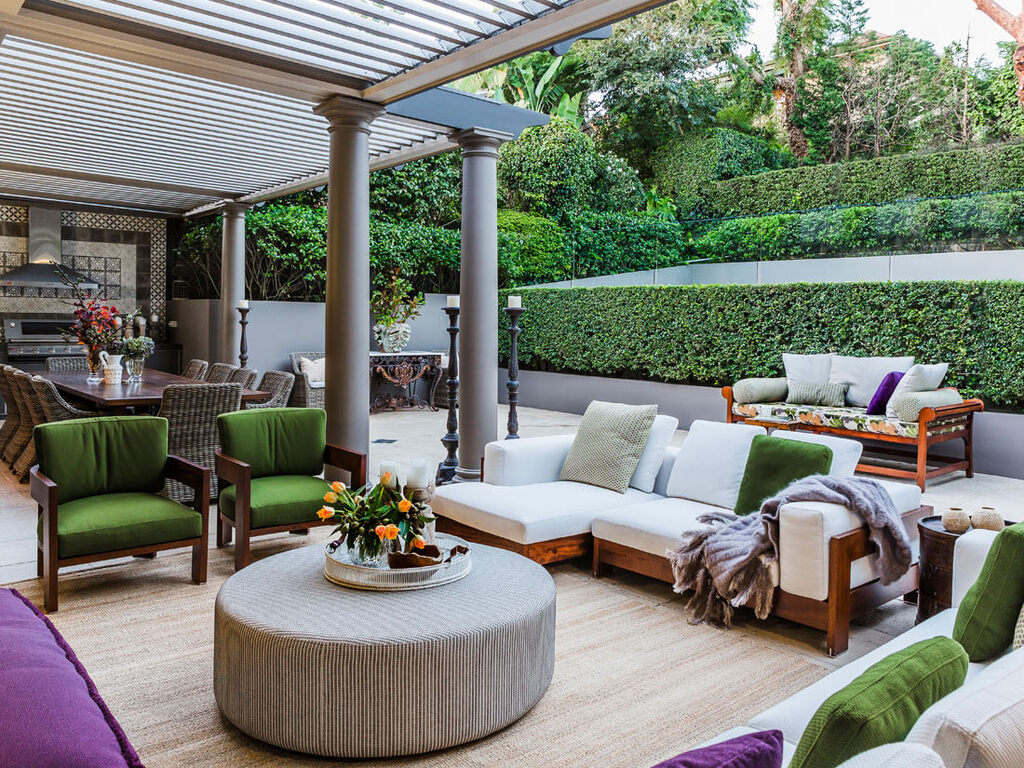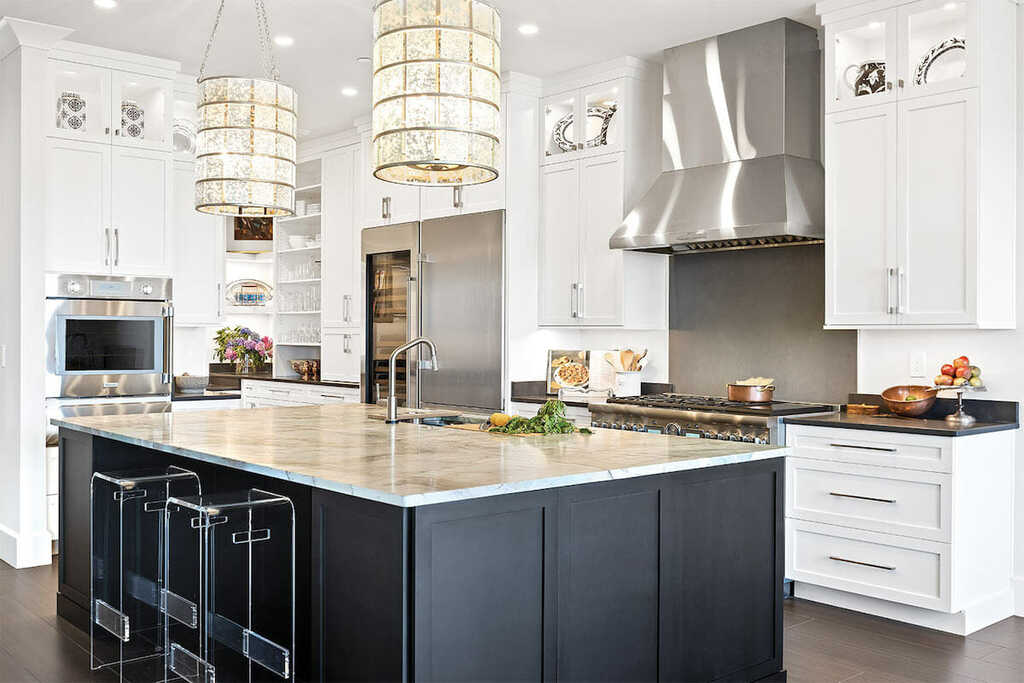Explore this post with:
Modern residential architecture is evolving rapidly, driven by innovative designs and a focus on sustainability. If you’re looking to update your home, exploring the latest architectural trends is essential to ensure your investment is stylish and functional. From open concept living spaces to the integration of smart home technology, the architectural landscape for residential homes has never been more exciting.
This article delves into the most compelling trends that are shaping the way we design and live in our homes today.
1. Open Concept Living Spaces Enhance Connectivity
One of the most significant shifts in modern residential architecture is the move towards open concept living spaces. This design trend eliminates the barriers between different functional areas of the home, such as the living room, dining room, and kitchen. By removing walls, these spaces become more fluid and connected, fostering a sense of togetherness and making it easier for family members to interact.
Open concept designs also maximize the flow of natural light, creating a brighter and more inviting atmosphere. The sense of spaciousness that comes with open layouts is particularly appealing in smaller homes, where maximizing every square foot is crucial. Moreover, open spaces provide greater flexibility in furniture arrangement, allowing homeowners to create a layout that best suits their lifestyle and needs.
2. Luxurious Bathroom Trends

Bathrooms are no longer seen merely as utilitarian spaces; they have transformed into personal sanctuaries where relaxation and luxury are paramount. Modern bathroom trends include features such as freestanding tubs, walk-in showers with multiple showerheads, and smart fixtures that offer advanced functionalities like temperature control and water conservation.
To achieve these sophisticated designs, the expertise of bathroom remodeling professionals is invaluable. These experts bring a wealth of knowledge about the latest materials and products. They can help homeowners create a bathroom that is both beautiful and highly functional. Whether it’s installing a new shower or upgrading to a new tub, bathroom remodeling experts ensure that every detail is executed flawlessly.
3. Eco-Friendly Materials for Sustainable Living
Sustainability is at the heart of many modern architectural trends, with eco-friendly materials becoming increasingly popular. Homeowners are choosing materials like bamboo flooring, reclaimed wood, and recycled metal to reduce their environmental footprint and promote a healthier living environment. These materials not only have a lower impact on the planet but also bring a unique aesthetic to the home.
Bamboo, for instance, is a highly renewable resource that offers the durability of traditional hardwood flooring but with a smaller environmental impact. Reclaimed wood adds character and history to a home, with each piece telling a story through its unique grain and patina. Recycled metal can be used in various applications, from roofing to decorative accents, providing both strength and style. Incorporating these sustainable materials into home design is a tangible way to contribute to environmental conservation while enjoying the benefits of modern architecture.
4. Indoor-Outdoor Living Spaces

Homeowners are creating seamless transitions between their interior spaces and outdoor areas, effectively expanding their living space. Features such as large sliding glass doors, outdoor kitchens, and covered patios allow for year-round enjoyment of the outdoors.
These spaces are designed to be extensions of the home, providing areas for relaxation, entertaining, and dining. Outdoor living areas can be equipped with comfortable furniture, fire pits, and even entertainment systems to create a versatile environment that caters to a variety of activities. The emphasis on indoor-outdoor living reflects a desire to connect more closely with nature while enjoying the comforts of home.
5. Minimalist Design Aesthetics for a Serene Environment
Minimalism in modern residential architecture focuses on simplicity, functionality, and a clutter-free environment. This trend emphasizes clean lines, neutral color palettes, and the use of natural materials, creating a serene and organized living space. Minimalist design is all about eliminating unnecessary elements and focusing on what truly matters, resulting in a home that feels calm and spacious. Top architects like Phillip Summers, known for his innovative approach, seamlessly blend form and function in his designs, prioritizing open spaces, natural light, and a harmonious connection between the indoor and outdoor environments.
One of the key aspects of minimalist design is the use of multifunctional furniture and built-in storage solutions. These features help maximize space while maintaining a sleek and uncluttered appearance. Additionally, minimalist interiors often incorporate large windows and open layouts to enhance the flow of natural light, further contributing to a sense of openness and tranquility.
6. Emphasizing Natural Light with Large Windows

Maximizing natural light is a top priority in modern residential architecture. Large windows, skylights, and glass walls are common features that help bring the outdoors in and brighten up interior spaces. This trend not only enhances the aesthetic appeal of a home but also offers several practical benefits.
Natural light has been shown to improve mood, boost productivity, and contribute to overall well-being. In addition, it reduces the need for artificial lighting during the day, leading to energy savings. Architects and designers are increasingly using innovative window designs and placements to ensure that homes are filled with ample natural light, creating a warm and inviting atmosphere.
7. Unique Exterior Facades for Curb Appeal
The exterior design of a home is just as important as the interior, and modern architectural trends reflect this with unique and eye-catching facades. Homeowners are opting for a mix of materials, such as wood, metal, and stone, to create visually striking exteriors that stand out and make a lasting impression.
These mixed-material facades not only enhance the aesthetic appeal of a home but also offer durability and low maintenance. Additionally, features like vertical gardens, rooftop terraces, and green walls are becoming popular, adding a touch of nature to the urban landscape. By investing in a distinctive exterior design, homeowners can boost their home’s curb appeal and value.
8. Personalized and Custom Designs Reflect Individual Style

In an era where individuality is celebrated, personalized and custom designs are highly sought after in modern residential architecture. Homeowners want their living spaces to reflect their unique tastes and preferences, leading to the rise of bespoke cabinetry, custom-built furniture, and tailored architectural details.
Customization allows homeowners to create spaces that are perfectly suited to their needs and lifestyle. Whether it’s a custom kitchen layout, a personalized home office, or a unique feature wall, these tailored elements add a personal touch to a home. Architects and designers work closely with homeowners to bring their visions to life, ensuring that every detail is carefully considered and executed.
Conclusion
Keeping up with modern architectural trends can significantly enhance your home’s aesthetic and functional appeal. Whether you’re planning a complete renovation or just a few updates, incorporating these trends will ensure your home is both contemporary and comfortable. Embrace the changes and let your home reflect the modern lifestyle you desire. From open concept living spaces to personalized designs, today’s architectural trends offer endless possibilities for creating a home that is not only stylish but also perfectly suited to your needs. By staying informed about the latest trends and working with experienced professionals, you can transform your home into a modern haven that you and your family will enjoy for years to come.
In Case You Missed It!
About the Author: Nishant Desai
Nishant Desai has over 8+ years of experience in SEO and blogging. His blogging expertise can organically increase online visibility and traffic for blogs and websites. With his SEO expertise, he has already contributed to iGeeksblog, Firstsportz, and Firstcuriosity. In addition, he can create content strategies, conduct keyword research, publish optimized blogs, and resolve technical issues.




